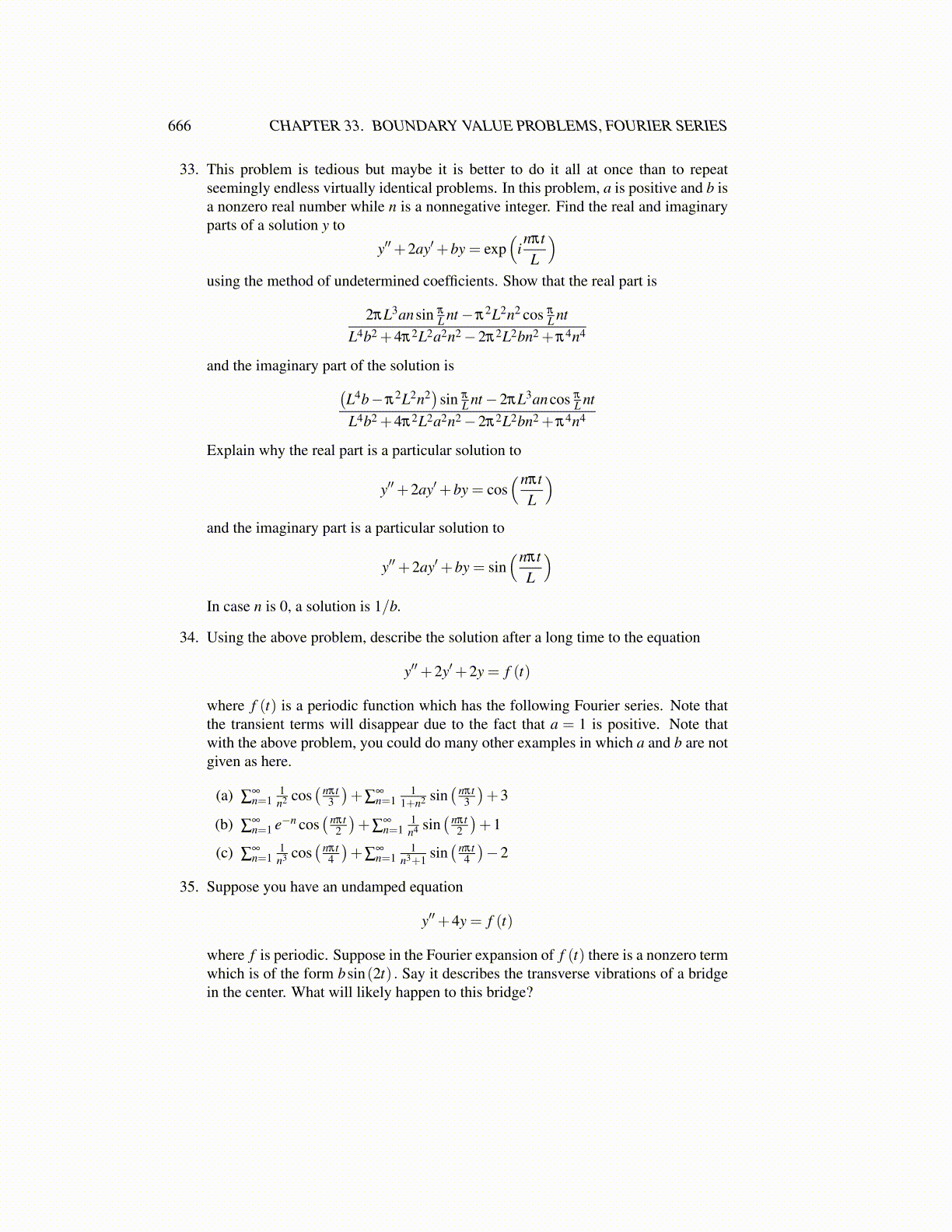
666 CHAPTER 33. BOUNDARY VALUE PROBLEMS, FOURIER SERIES
33. This problem is tedious but maybe it is better to do it all at once than to repeatseemingly endless virtually identical problems. In this problem, a is positive and b isa nonzero real number while n is a nonnegative integer. Find the real and imaginaryparts of a solution y to
y′′+2ay′+by = exp(
inπtL
)using the method of undetermined coefficients. Show that the real part is
2πL3ansin π
L nt−π2L2n2 cos π
L ntL4b2 +4π2L2a2n2−2π2L2bn2 +π4n4
and the imaginary part of the solution is(L4b−π2L2n2
)sin π
L nt−2πL3ancos π
L ntL4b2 +4π2L2a2n2−2π2L2bn2 +π4n4
Explain why the real part is a particular solution to
y′′+2ay′+by = cos(nπt
L
)and the imaginary part is a particular solution to
y′′+2ay′+by = sin(nπt
L
)In case n is 0, a solution is 1/b.
34. Using the above problem, describe the solution after a long time to the equation
y′′+2y′+2y = f (t)
where f (t) is a periodic function which has the following Fourier series. Note thatthe transient terms will disappear due to the fact that a = 1 is positive. Note thatwith the above problem, you could do many other examples in which a and b are notgiven as here.
(a) ∑∞n=1
1n2 cos
( nπt3
)+∑
∞n=1
11+n2 sin
( nπt3
)+3
(b) ∑∞n=1 e−n cos
( nπt2
)+∑
∞n=1
1n4 sin
( nπt2
)+1
(c) ∑∞n=1
1n3 cos
( nπt4
)+∑
∞n=1
1n3+1 sin
( nπt4
)−2
35. Suppose you have an undamped equation
y′′+4y = f (t)
where f is periodic. Suppose in the Fourier expansion of f (t) there is a nonzero termwhich is of the form bsin(2t) . Say it describes the transverse vibrations of a bridgein the center. What will likely happen to this bridge?